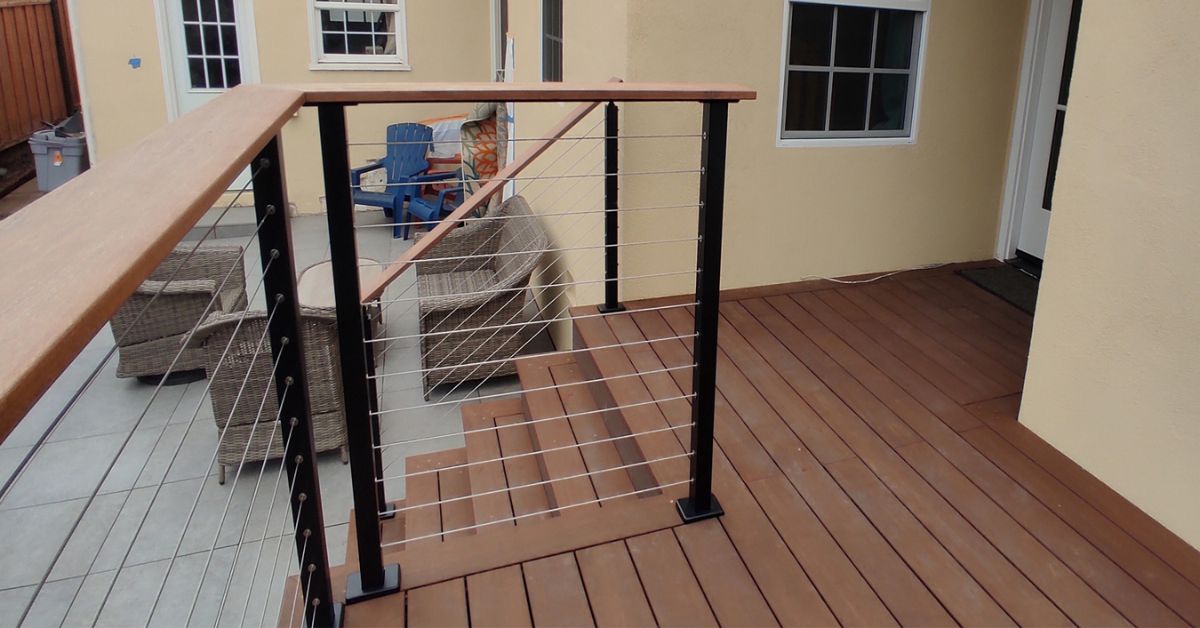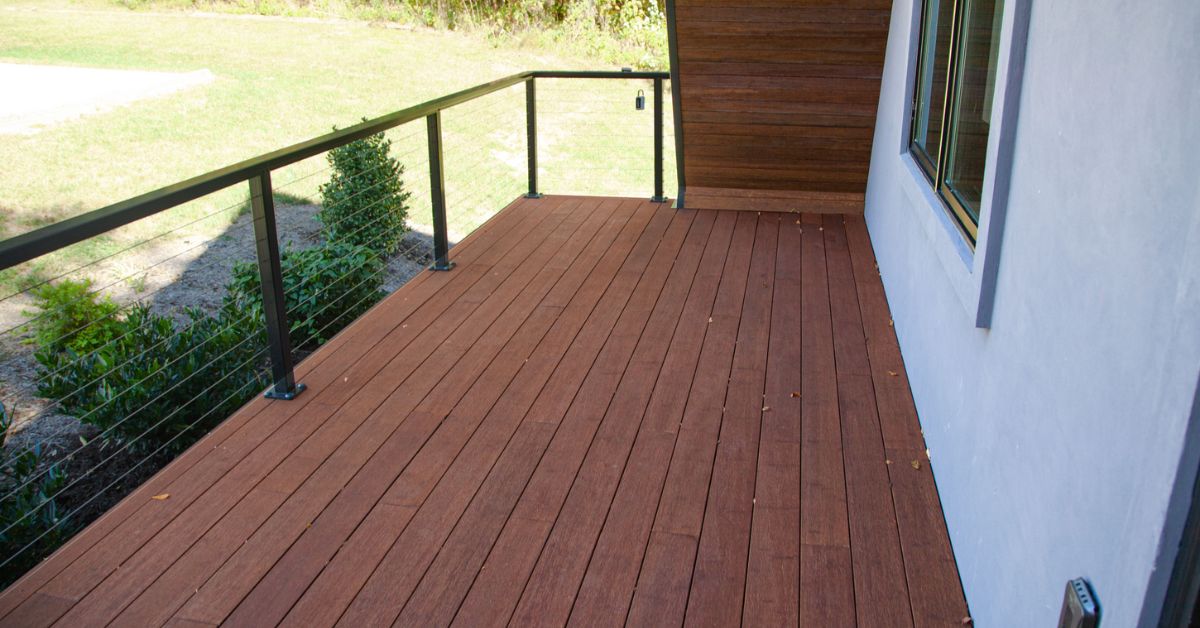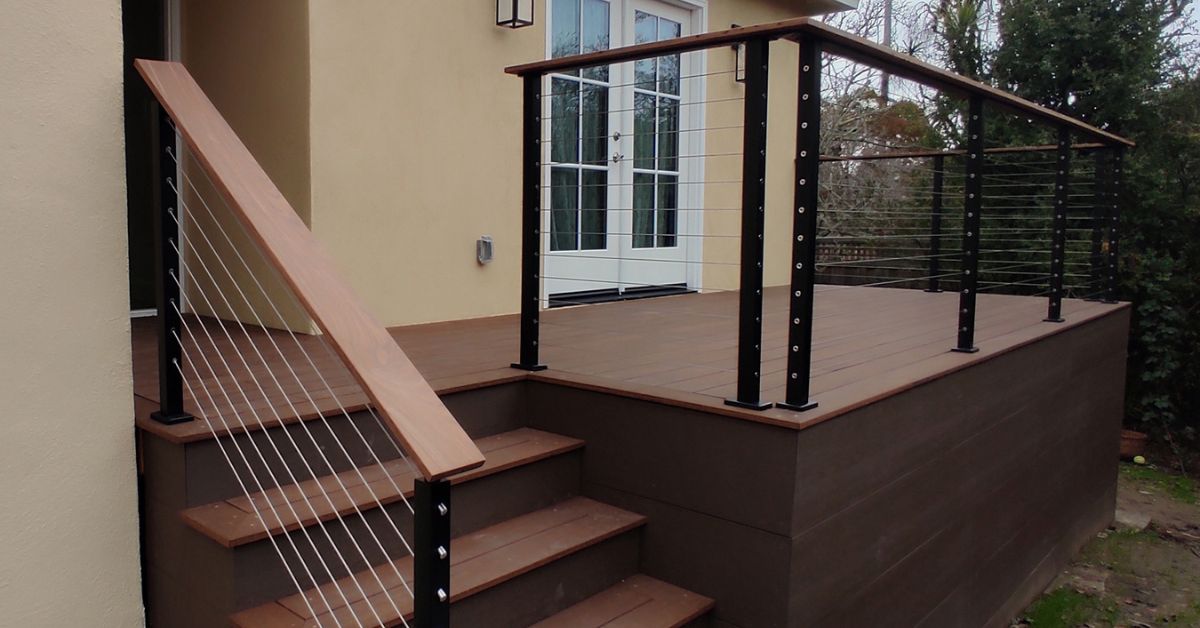Tips for Choosing a Deck Railing System and Materials
By Steve
Posted on
Friday, October 4, 2024 9:18 PM

Choosing the right deck railing system is crucial for enhancing the safety, aesthetics, and overall value of your outdoor space. With a myriad of options available, from traditional wood to modern glass and steel solutions, selecting the perfect material and style can seem overwhelming.
However, an informed decision can transform your deck into a beautiful and inviting area for relaxation and entertainment. In this guide, we'll explore the various railing systems and materials available and the tips you need to help you make an educated choice that’s safe and complements your home's design.
What Is a Railing System and Why Are They Important?
A railing system is a crucial safety feature used to enclose elevated platforms, such as decks, balconies, and staircases. Specifically, rail systems are comprised of the top and bottom rails and the in-between posts at a minimum.
More than just a protective barrier, a well-designed railing can significantly enhance the visual appeal of your outdoor space. These systems not only prevent accidental falls but also provide a sense of enclosure, sectioning off spaces and allowing you to enjoy your surroundings with peace of mind.

Types of Deck Railing Materials
Traditional Wood
When it comes to deck railing, traditional wood remains a timeless choice appreciated for its natural beauty and versatility. Their stunning, natural hues and unique grain patterns can enhance the overall warmth of your outdoor space. It’s also highly customizable, allowing for a range of finishes, stains, and styles that can seamlessly blend with various architectural designs.
However, wood does come with its drawbacks. It requires regular, intensive maintenance to ensure longevity. This includes periodic sealing, staining, and treatment to protect against weathering, rot, and pests. Additionally, heavy rainfall or extreme temperature fluctuations can cause warping or splitting, which may compromise safety.
Composite Wood
As a combination of wood fibers and recycled plastic, composite wood options retain the appealing look of natural wood but are more durable. One of the most significant advantages of composite wood is its low maintenance requirement; it doesn’t need regular staining or sealing, and it resists fading, warping, and splintering over time. This material is also eco-friendly, as it utilizes reclaimed materials, making it an appealing choice for environmentally conscious homeowners.
However, while it mimics the appearance of wood, it often lacks the authentic texture and warmth that many prefer in natural materials. Although the plastic does make it resistant to the elements, extreme temperatures can sometimes lead to a softening or darkening of the material.
Fused Bamboo Lumber
Fused bamboo lumber is an innovative railing material that has recently gained traction in the design and construction industry for its durability, aesthetics, and weather resistance. While bamboo is a plant and not a tree (and therefore not wood), it exhibits a tensile strength comparable to steel, making it resistant to cracking and warping. This is also because the fusing process makes the lumber incredibly dense and, with 13 percent phenolic resin, it's not going to budge. This resilience ensures that bamboo railings can withstand the rigors of various weather conditions, providing a reliable safety feature for elevated spaces.
Moreover, fused bamboo is an eco-friendly option, as it grows rapidly, replenishes quickly, and puts less pressure on bamboo forests because of its easy harvesting. Its striking aesthetic, characterized by a unique grain and rich color, adds a contemporary and luxurious element to any outdoor area.
However, fused bamboo can be more expensive than conventional options, which might be a limiting factor for some projects. However, its outstanding longevity and minimal care can help save installers money in the long run, making it a wise investment.
Metal (Aluminum and Steel)
The standout feature of metal railings is their exceptional durability. They’re resistant to rust and corrosion, especially when manufacturers powder-coat or galvanize them. As a result, they can withstand harsh weather conditions without losing their structural integrity. Additionally, metal railings require minimal maintenance, which can be a decisive factor for those looking to enhance the longevity of their outdoor features with minimal effort.
However, while metal railings offer a contemporary aesthetic, they may not appeal to those seeking the warmth and natural look of wood or composite materials. Metal can also become hot to the touch in direct sunlight, potentially causing discomfort during warmer months. Additionally, speaking of temperatures and climate, the type of location can significantly affect how much care they need.
What To Consider When Choosing a Railing System
Compliance With Building Codes
A railing system that is in compliance with local building codes is one of the most important things to consider when choosing a deck railing system and materials. These codes safeguard against accidents and injuries, specifying minimum height requirements, load-bearing capacities, and the spacing of vertical elements to prevent children from slipping through.
Familiarizing yourself with these regulations not only promotes safety but also helps avoid potential fines or the need for costly modifications down the line. If you’re a homeowner, don’t disregard the help a professional can offer. It’s beneficial to consult with local building authorities or hire a knowledgeable contractor who can provide insights into code compliance while navigating the complexities of your project.
Maintenance Requirements
When deciding on a deck railing system, understanding the maintenance requirements of each material is essential to ensure long-lasting beauty and safety. Regular maintenance not only protects your investment but also enhances the aesthetic appeal of your outdoor space. Traditional wood requires consistent upkeep, including staining, sealing, and inspections for signs of wear, such as splitting or rot. However, these tasks can be time-consuming and might require professional intervention depending on the complexity.
In contrast, options like composite wood and fused bamboo lumber offer low-maintenance solutions, allowing homeowners to enjoy their decks without the frequent demands of upkeep. Metal railings of aluminum or stainless steel require only occasional cleaning to maintain their luster unless you’re in a particularly humid climate. Understanding these maintenance nuances enables you to select a railing system that fits not only your style preferences but also your desired level of commitment to ongoing care.

Durability and Weather Resistance
As your deck and railing system will take the brunt of the outdoors, weather resistance and overall durability are critical factors to consider. A high-quality railing should withstand the test of time, retaining its beauty and structural integrity despite exposure to the elements. For instance, materials such as aluminum, stainless steel, and fused bamboo shine in this regard, offering unmatched resistance to damage and overall wear. With their ability to endure harsh weather conditions ranging from intense sunlight to heavy rainfall, these materials can maintain their aesthetic appeal with minimal upkeep.
Composite wood exhibits significant resilience as well; this material can last well up to and beyond 30 years and is resistant to mold, UV rays, moisture, and pests. However, if you’re looking for all of that and more, fused bamboo lumber checks all of the boxes and is unmatched in terms of sustainability.
At dassoXTR, our bamboo deck railing materials are sustainable, stunning, and can match any style, from contemporary to classic. As a bonus, we also sell all of our recommended compatible accessories and fasteners, so you can craft a gorgeous railing quickly and easily, without compromising on precision or aesthetics.